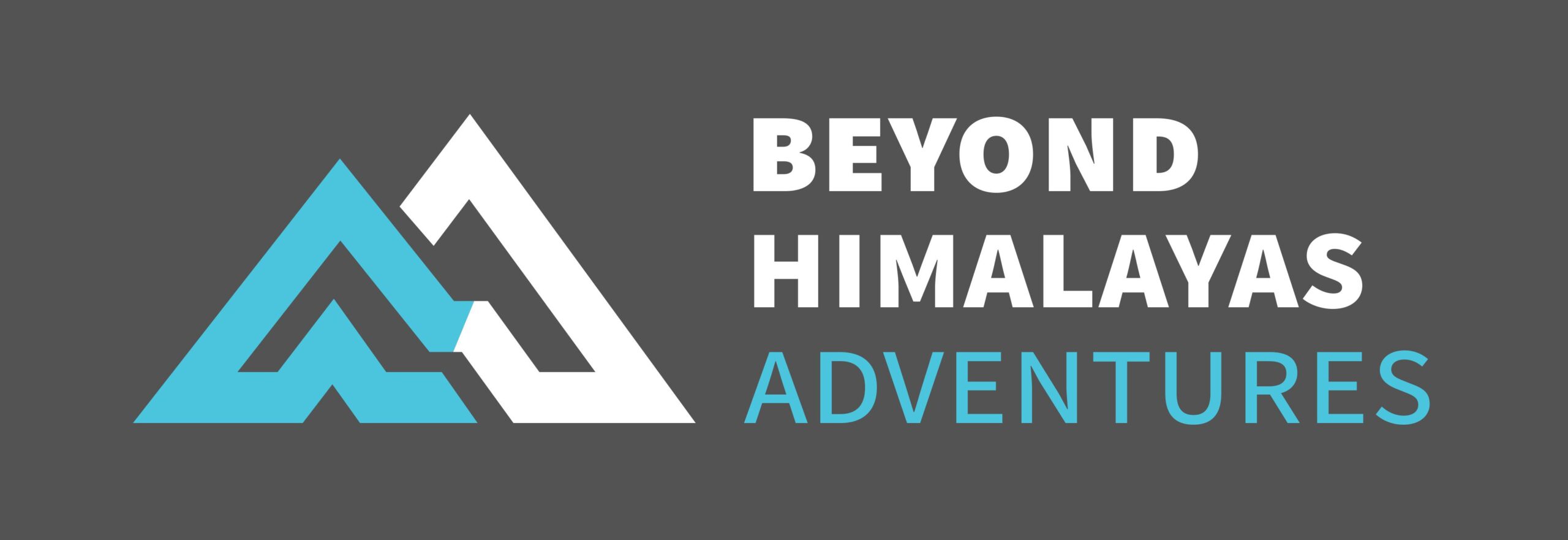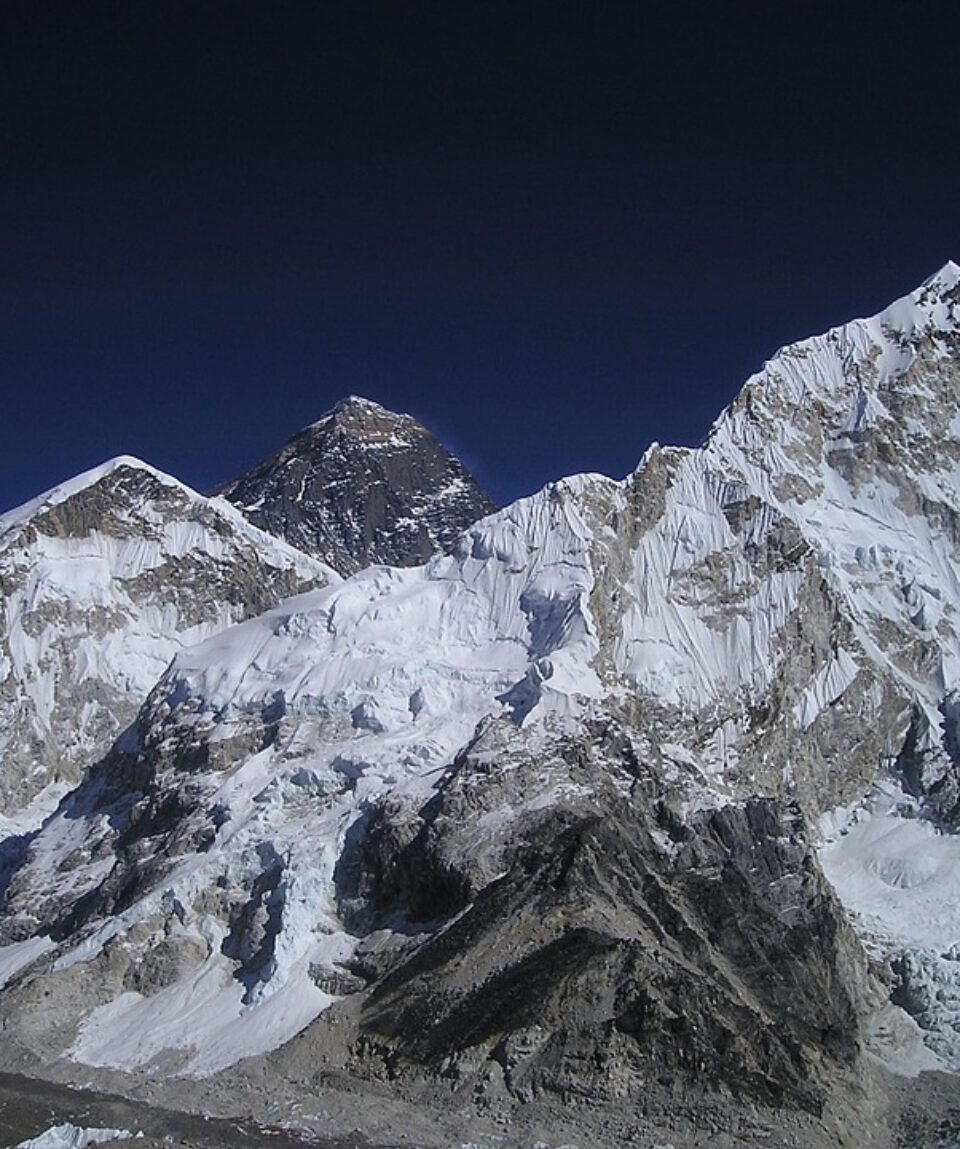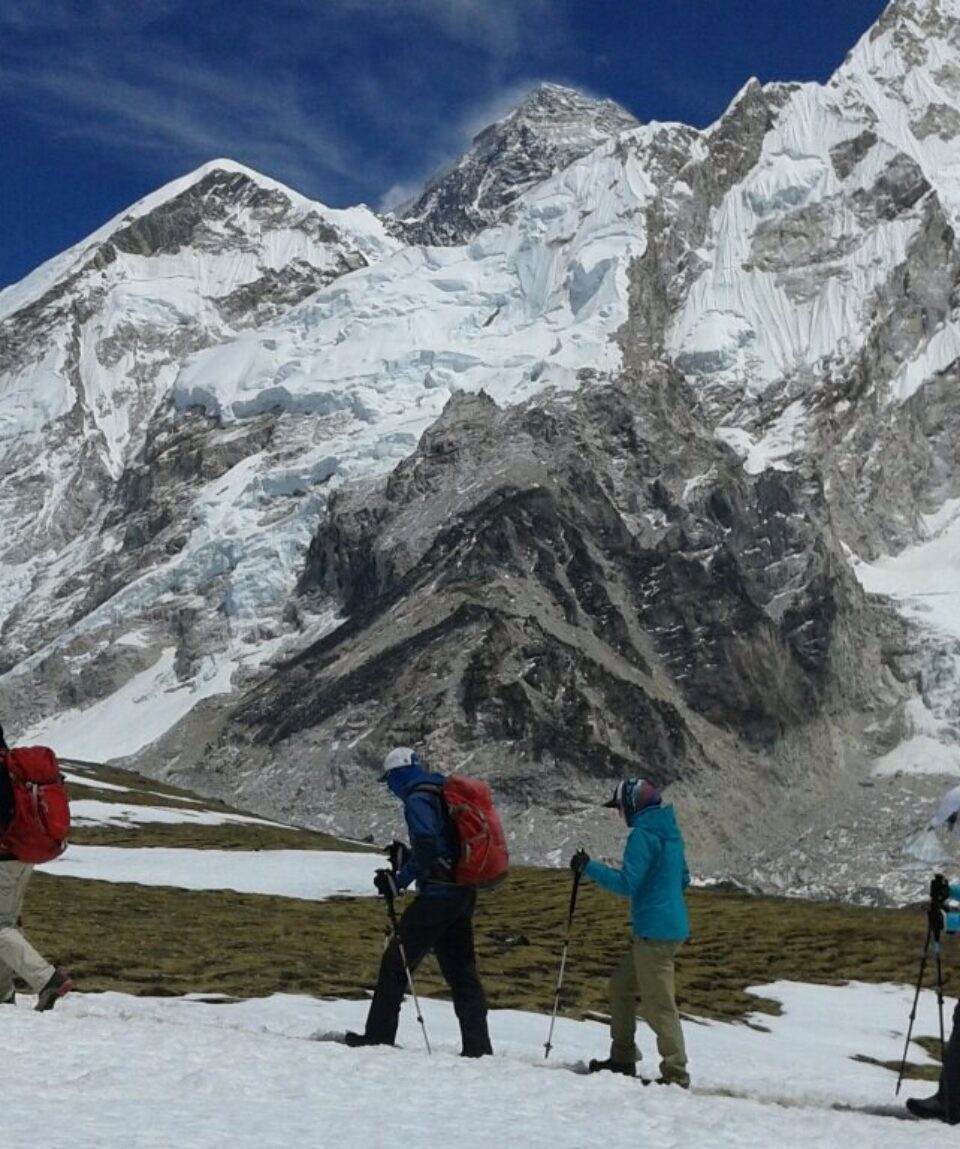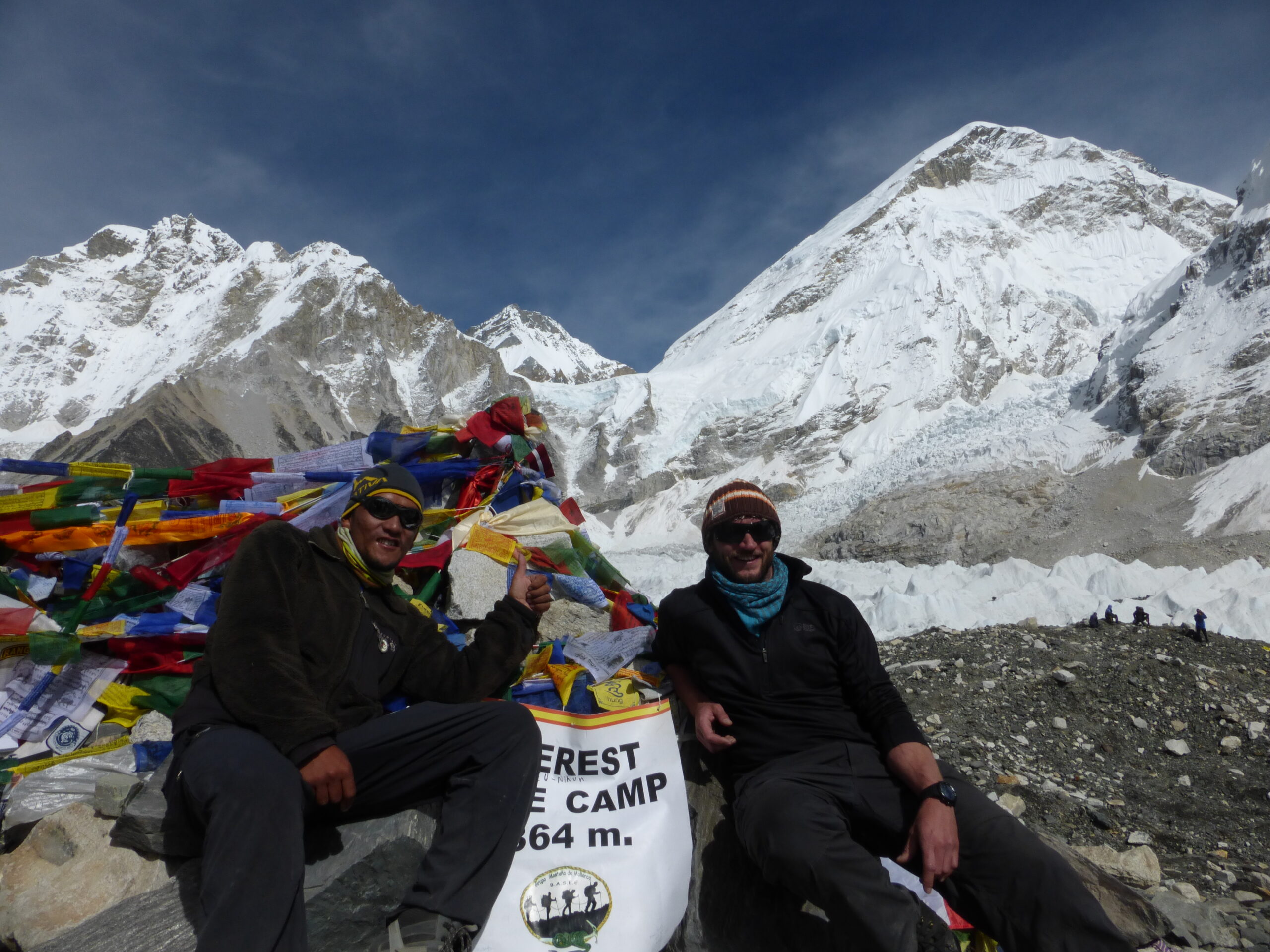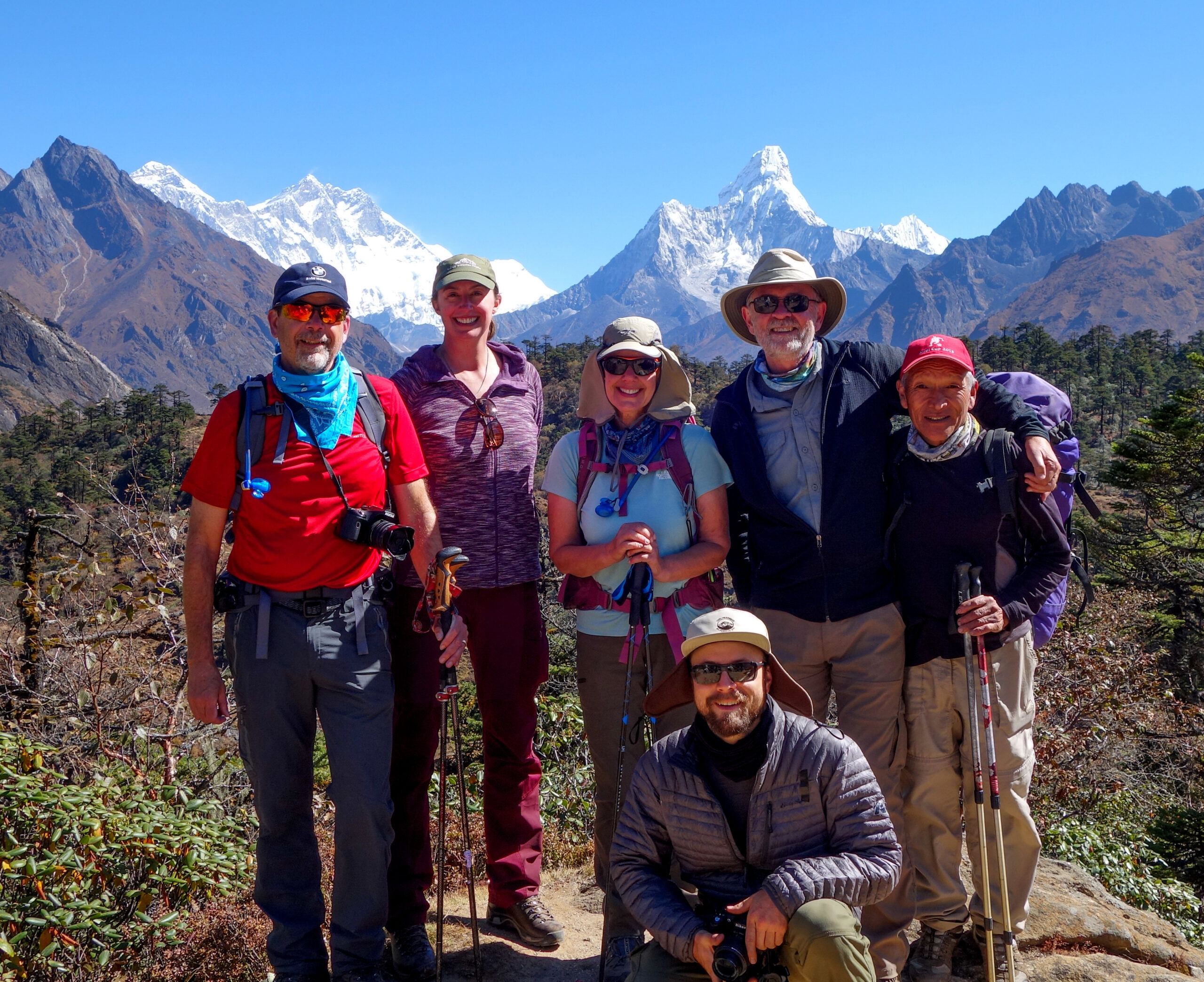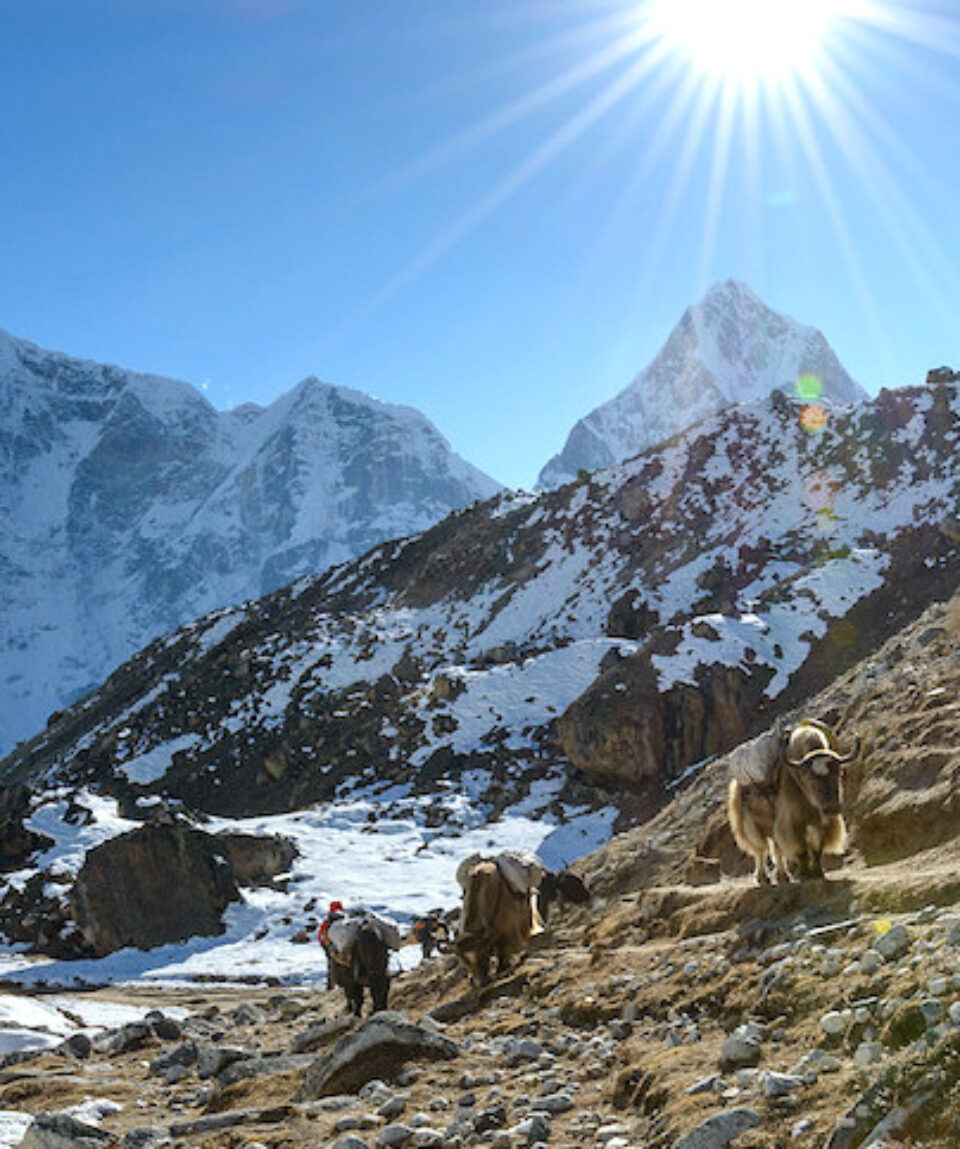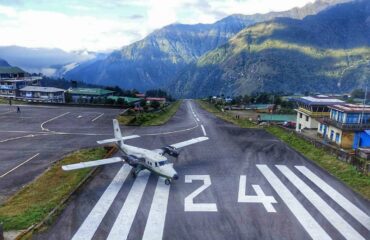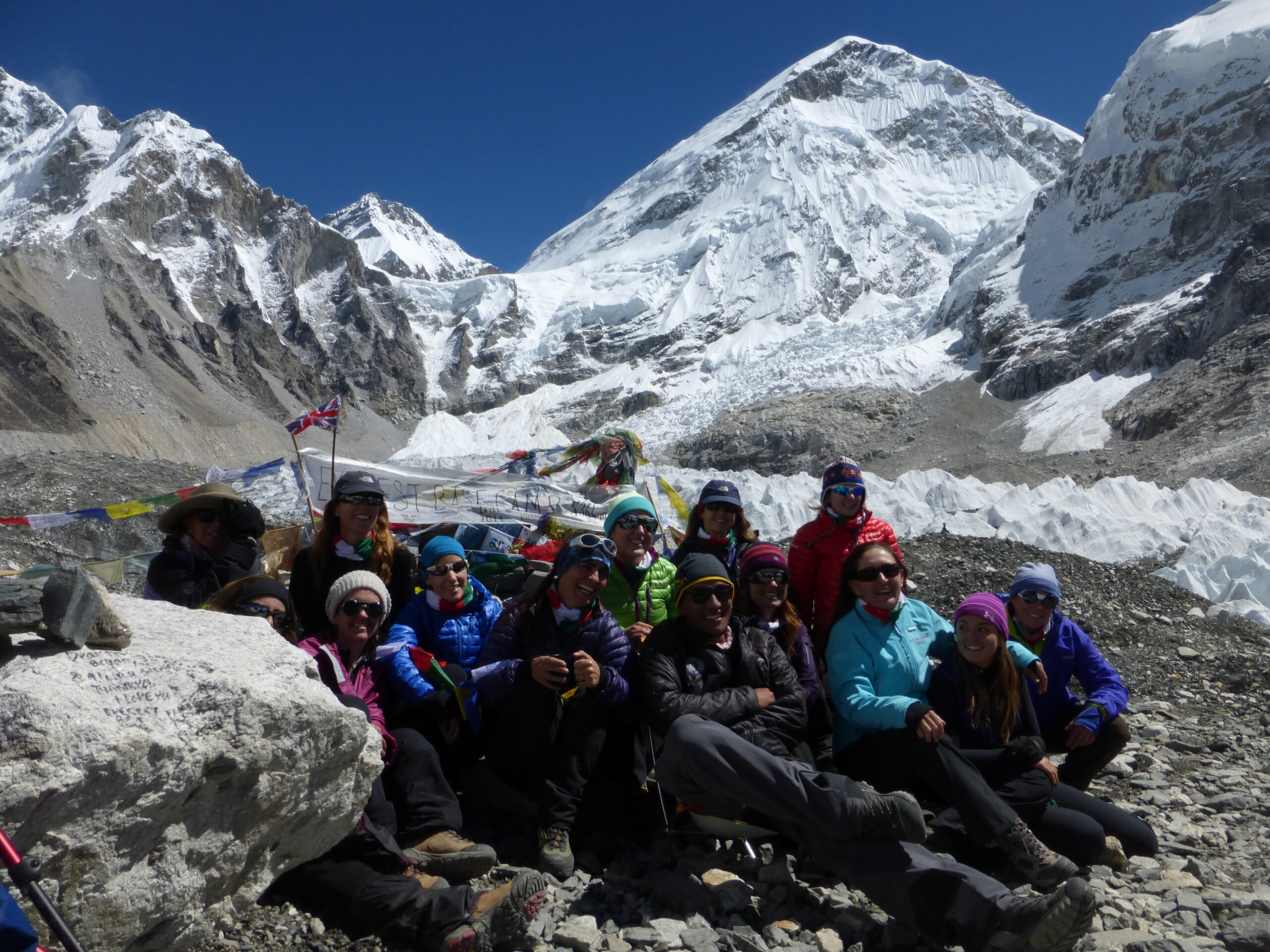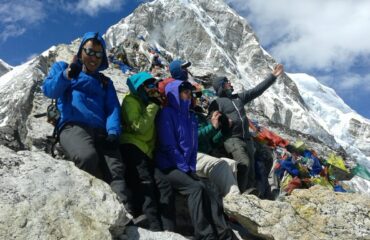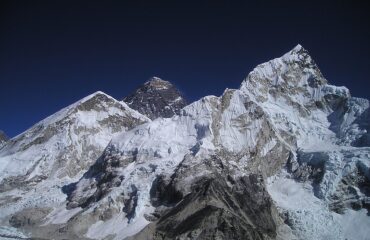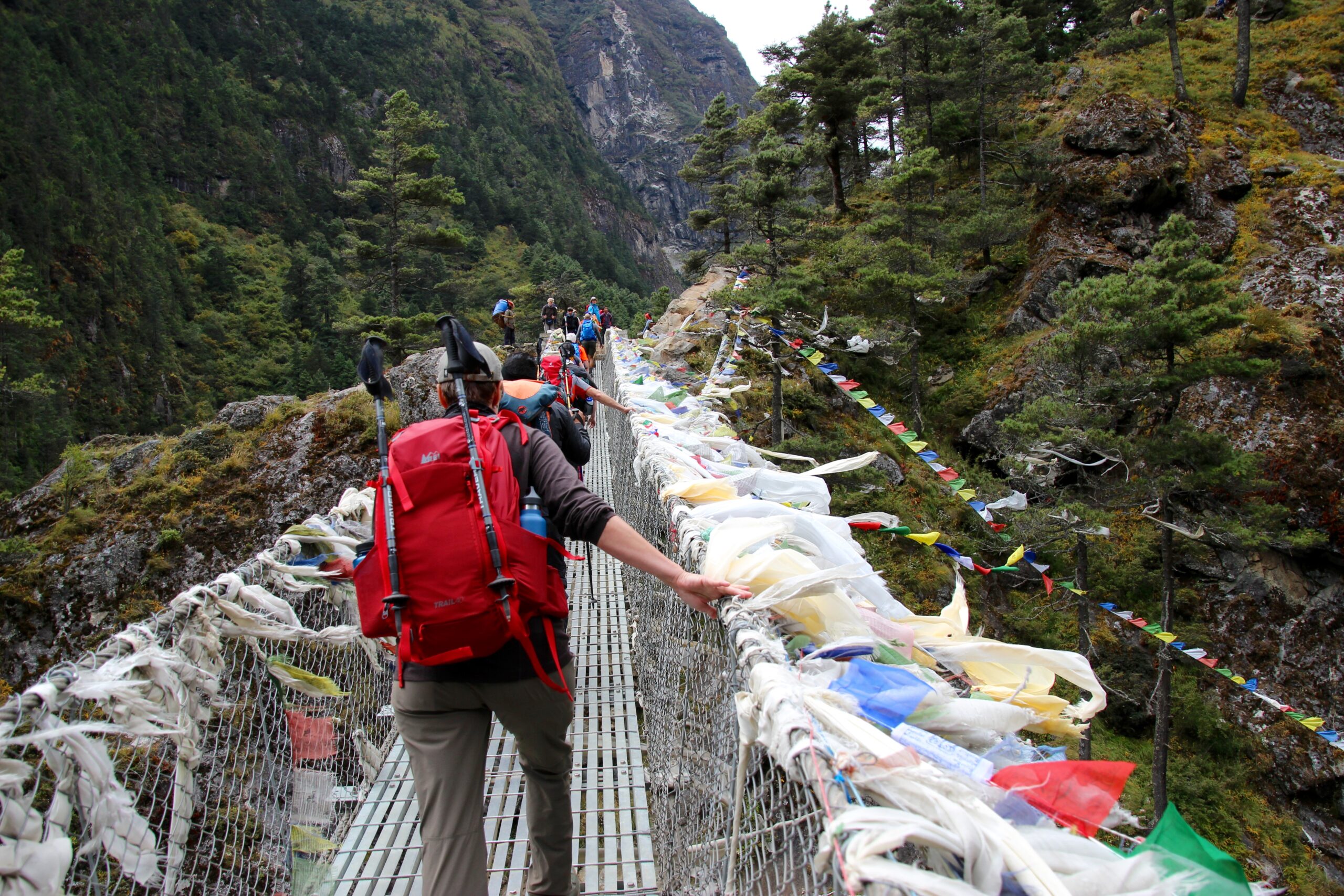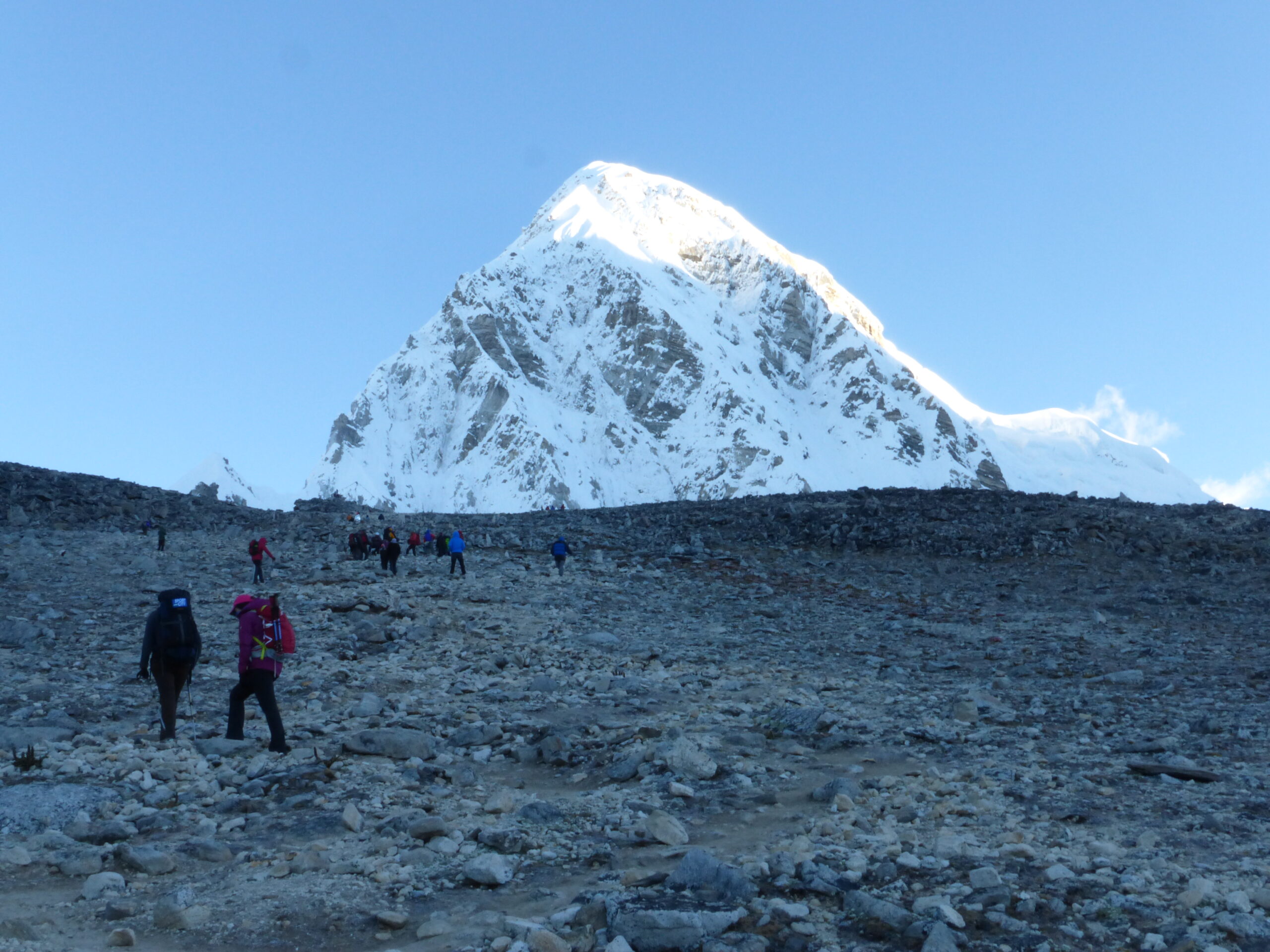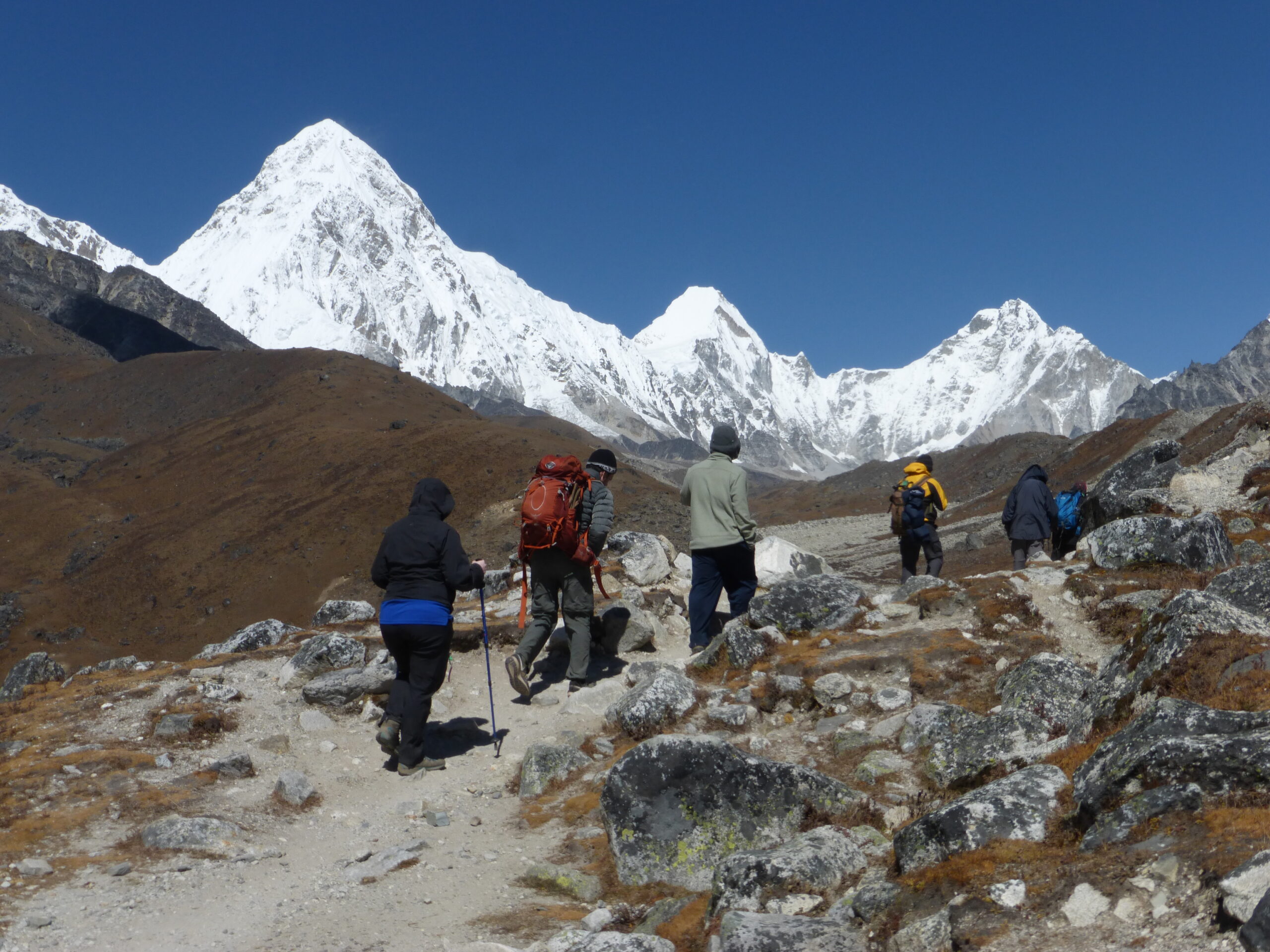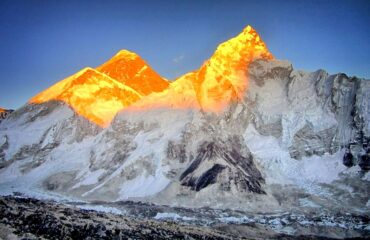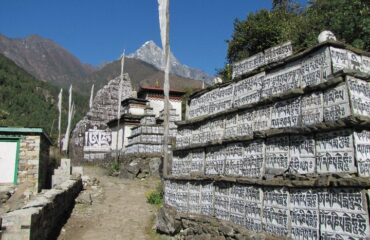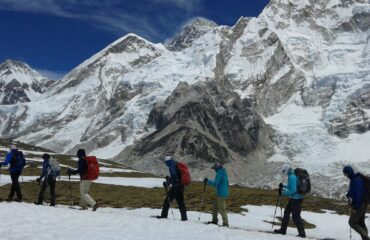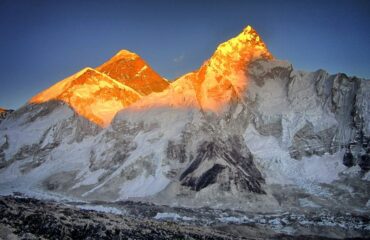Everest Base Camp Trekking
fromThe ultimate Himalayan trek and adventure of a lifetime. Stand face to face with Mount Everest and trek alongside 4 of the world’s tallest peaks. Enjoy the welcoming culture of the Sherpa.
-
Reviews 0 Reviews0/5
-
Vacation Style Holiday Type
-
Hiking
-
-
Activity Level Strenuous
-
Group Size Medium Group
Everest base camp trek in Nepal is regarded as one of the most popular adventurous activities that any travel lover would love to join in. Everest base camp trek around the foothills of the highest Himalayas lets us feel the true feelings of exploring nature, culture, and adventure. From spectacular panoramic views of Everest Himalayan range from Kalapathhar viewpoint to rich insights into local Sherpa’s culture and traditions while making our way crossing several suspension bridges, riverbanks, rhododendron trees, visiting monasteries and chortens; overall trekking experience is just amazing!
An Everest base camp trek is the adventure of a lifetime, a journey for those whose dreams soar higher than even the clouds. Miles from cars, conveniences, and daily luxuries, you’ll saturate your spirit in natural beauty and stretch your personal endurance beyond what you thought possible.
Everest Base Camp Trek is a moderately challenging adventure and it is best recommended for all those adventure lovers who possess a good level of physical fitness with the ability to adapt to high altitude conditions. Regarding the best seasons, you will get a chance to meet mountaineers and witness blossoming rhododendron trees during the climbing season of Spring between the months of March and May. Whereas, Autumn is also peak season with clear weather conditions when thousands of trekkers aim for Everest Base Camp. Then from September to November, after the monsoon passes.
- Airport transfers and escort.
- All meals while on the trek. (breakfast, lunch, and dinner)
- Accommodation during the trek at the local lodge.
- Domestic airfares and transportation from Kathmandu to the trek starting point.
- English speaking government-licensed Sherpa trekking guide & assistant guide (4 trekkers=1 assistant guide)
- Porter Service (2 Trekker =1 porter)
- Staff cost including their (Wages, food, insurance, and accommodation)
- All national park fees
- Local municipality entry fees.
- 3 nights accommodation at 3-star category hotel in Kathmandu on twin sharing basis with breakfast.
- All guided sightseeing tours in Kathmandu and entry fees.
- All ground transportation on comfortable private vehicle
- All government and local taxes
- International airfares
- International Airport Departure Tax and visa entry fees
- Trekking Equipment
- Major meals, Lunch, and dinner during your stay in Kathmandu
- Any type of personal expenses, such as alcoholic beverages and drinks, phone, and laundry.
- Rescue & travel insurance, trip cancellation costs, accident or health emergency, evacuation, loss, theft or damage to baggage, and personal effects.
- Tips & Gratuities to porters and guides
- We strongly advise you to take out personal travel insurance.
- Day 1 Depart Home Country
- Day 2 En Route (Transit)
- Day 3 Arrival in Kathmandu (1,300m/4,264ft) and transfer to hotel
- Day 4 Kathmandu: Sightseeing and trek Preparation (1,350m/4,429ft)
- Day 5 Fly to Lukla aTrek to Phakding (2,651m/8,700ft)
- Day 6 Trek to Namche Bazaar (3,438m/11,280 ft)
- Day 7 Namche Bazaar (3,438m/11,280 ft) acclimatization
- Day 8 Namche Bazaar to Tengboche (3,870m/12,694ft): 10km, 5 - 6 hours
- Day 9 Tengboche to Dingboche (4,360 m/14,300 ft): 9km, 5 - 6 hours
- Day 10 Acclimatization Day
- Day 11 Dingboche to Lobuche (4940 m/16,207 ft): 7km, 5-6 hours
- Day 12 Lobuche to Gorak Shep (5,170 m/16,961ft), visit Everest Base Camp (5,364 m/17,594 ft): 13km, 6-7 hours
- Day 13 Gorak Shep to Kala Patthar (5,545m/18,192ft) to Pherice (4,288m/14,070ft): 16km, 7-8 hours
- Day 14 Pheriche to Phortse (12,467 ft.) 7 km 6-7 hours
- Day 15 Phortse to Namche Bazaar (3,440m/11,280 ft): 8 km 6 - 7 hours
- Day 16 Namche Bazaar to Lukla (2,860m/9,186ft): 15 km 6 - 7 hours
- Day 17 Fly back to Kathmandu
- Day 18 Reserved Day in Kathmandu
- Day 19 Transfer to airport for international flight
- Day 20 En Route to Home Country
- Day 21 Arrive Home Country
The main emphasis while trekking is on keeping warm and dry while still being lightweight. You should bring a rucksack or backpack for the gear required during the day. Your pack should contain items such as warm clothes, a jacket, a camera, water bottles, a personal first aid kit, and snacks. The weight limit is 5kg. A porter will carry the rest of your personal equipment packed in a duffel or kit bag. The weight limit for your duffel bag is 15 kg however it is different in the case of peak climbing and expedition.
A Note on Packing
For your international flights, we recommend that you pack all your equipment in your two duffle bags or suitcase. Do not simply pack your backpack (since the straps can be damaged by the baggage handling machines). It is important to lock these bags for their trip. Depending on the airport, you may be able to put your travel locks on after TSA has searched the bags. If not, Lock the bags with Zip Ties. If the TSA cuts off the zip-tie to search your bag, they will replace it. You will still need the travel locks to lock your bags in the hotel and during the trek. Generally, you will take one duffel on the trek , and leave one in the hotel in Kathmandu with your belongings for your time in the city. Your trek in duffel will only be accessible in the evenings (with items such as changes of clothing, sleeping bag), and your day pack will hold vitals such as water, layering, blister kit, and camera.
FOOTWEAR
- Hiking Boots with ankle support. Make sure they are comfortable and you have worn them in before arriving in Nepal.
- Camp Shoes or Tennis Shoes
- Thick, warm wool and day hiking socks
- Camp Sandle
- Gaiters (Optional )
- Plastic bag to carry spare shoe
CLOTHING
- Lightweight Trekking pants
- Synthetic T-shirts, long-sleeve shirts
- Synthetic hiking pants, Zip-off pants
- Trekking trousers
- T-shirts – Lightweight, quick-drying
- Long-sleeved shirt
- Fleece jacket with wind-Stopper (With wood)
- Down vest and/or jacket
- Rain jacket or poncho (Gore-tex or equivalent)
- Rain pants (Gore-tex or equivalent)
- Down jacket medium weight
- Fleece or wool pants
- Synthetic Underwear
- Women sports bras, synthetic(for women)
- Waterproof (preferably breathable fabric) shell pants
- Long sleeve tops or shirts (not cotton).
- Microfleece.
- Mid to heavyweight fleece or synthetic/ Primaloft
HEAD & GLOVES
- Fleece gloves.
- Warms mittens and/or gloves.
- Wool or fleece hat.
- Sun hat
- Warm hat wool or synthetic that covers your ears
- Bandana or scarf (eg. Buff Headwear).
- Head torch. Bring extra batteries.
- Sunglasses with UV Protection
ACCESSORIES
- Lightweight Sleeping bag
- Trekking poles
- Basic First Aid Kit
- Daypack (Ruck Sack): Recommended size is around 30 litres. You need to have enough space to carry water
bottles, camera, snacks, and extra clothing. The pack should have a good waist belt. It is also a good
idea to bring a rain cover to keep the contents dry - Fleece or silk liner for your sleeping bag
- Stuff sacks for keeping your gear dry and organized (Optional )
- Thermo-rest sleeping (optional)
- Water bottles
- Small wash towel
- Sunscreen and lip salve
- Water purification tablets (Pristine, Biox Aqua or Aqua Mira).
- Favorite snack food.(Optional)
- Books and cards etc.(Optional)
- Camera with spare batteries and memory cards.(Optional)
- Insurance certificate.
- Earplugs (optional).
- Hand sanitizer
- Any personal medications
TOILETERS
- Quick-drying towel (medium-sized)
- Soap (preferably biodegradable)
- Tooth brush/paste (preferably biodegradable)
- Deodorants
- Face and body moisturizer
- Nail clippers
- A small mirror (optional)
- Tissue paper/ toilet roll
- Anti-bacterial Hand wash etc ….
Conclusion:
As the weather condition is unpredictable in the Himalayan region, you need to be prepared at all times. A day can start sunny with clear skies and later become cold and windy at the high altitudes.
Sometimes, it can rain and snow during the trekking period. You need to remember that for a successful trekking journey, your physical comfort must be the first priority.
Note:
Please note that these items listed above will vary according to the season, trek duration. Please remember that your luggage will be carried by the porter, but you need to carry a daypack on your own. We also suggest you pack only necessary items to keep the weight of your equipment to a minimum.
The most popular months for trekking in the Everest region are March, April, May, October and November, as these months are when the conditions are at their best. The spring and the autumn tend to offer reasonable temperatures, clear skies, little-to-no rain, and less chance of problematic snowfall.
The Everest region is a beautiful place to visit and a trek to Everest Base Camp is an ambition for many trekkers. Trekking to the base of the world’s highest mountain is a fantastic achievement and it is well worth the effort. Most people think the positives outweigh the drawback of walking on busier trails
Most people will benefit from aerobic conditioning and strength endurance for Everest Base Camp. Although the trek is typically slow and steady, you will be trekking 5-8 hours per day and gaining on average 300m (1000 ft) in elevation each day
Trekking to Everest Base Camp is an adventure of a lifetime. This trek can be a life-changing experience for many people.
The difficulty level of the Everest Base Camp is moderate. The trekking time often requires two weeks. Even though the EBC Trek requires no prior trekking expertise, it is suggested that the trekker should be determined and be physically fit.
Altitude is by far the most challenging aspect of the trek and is what makes it more difficult than your average trek of the same length
